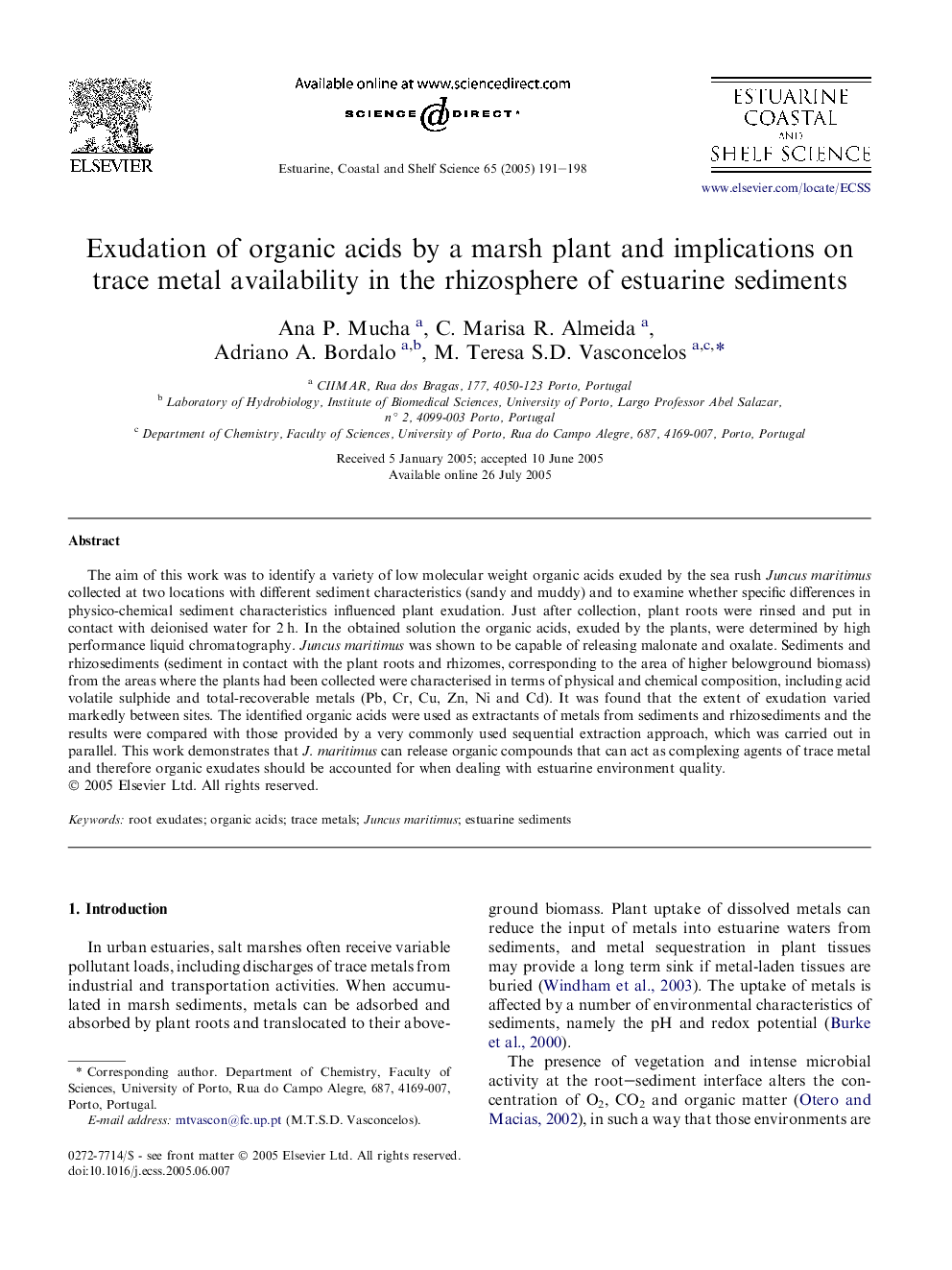| Article ID | Journal | Published Year | Pages | File Type |
|---|---|---|---|---|
| 9480664 | Estuarine, Coastal and Shelf Science | 2005 | 8 Pages |
Abstract
The aim of this work was to identify a variety of low molecular weight organic acids exuded by the sea rush Juncus maritimus collected at two locations with different sediment characteristics (sandy and muddy) and to examine whether specific differences in physico-chemical sediment characteristics influenced plant exudation. Just after collection, plant roots were rinsed and put in contact with deionised water for 2Â h. In the obtained solution the organic acids, exuded by the plants, were determined by high performance liquid chromatography. Juncus maritimus was shown to be capable of releasing malonate and oxalate. Sediments and rhizosediments (sediment in contact with the plant roots and rhizomes, corresponding to the area of higher belowground biomass) from the areas where the plants had been collected were characterised in terms of physical and chemical composition, including acid volatile sulphide and total-recoverable metals (Pb, Cr, Cu, Zn, Ni and Cd). It was found that the extent of exudation varied markedly between sites. The identified organic acids were used as extractants of metals from sediments and rhizosediments and the results were compared with those provided by a very commonly used sequential extraction approach, which was carried out in parallel. This work demonstrates that J. maritimus can release organic compounds that can act as complexing agents of trace metal and therefore organic exudates should be accounted for when dealing with estuarine environment quality.
Related Topics
Physical Sciences and Engineering
Earth and Planetary Sciences
Geology
Authors
Ana P. Mucha, C. Marisa R. Almeida, Adriano A. Bordalo, M. Teresa S.D. Vasconcelos,
